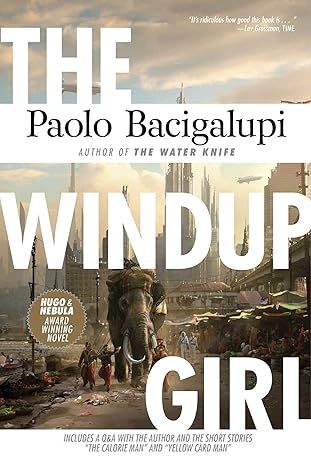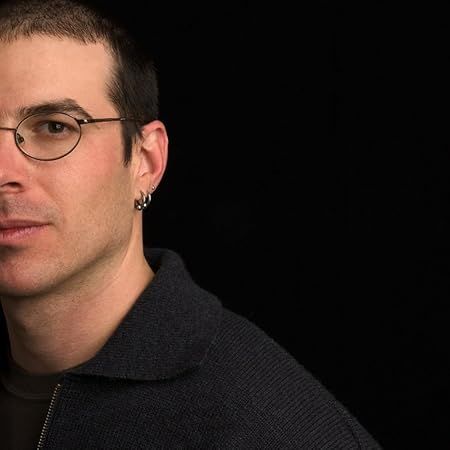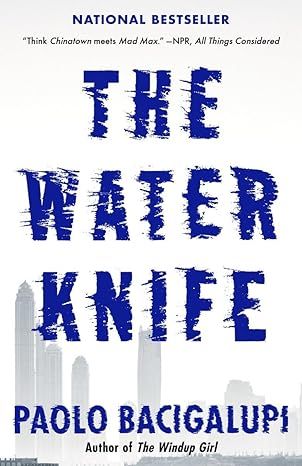The Windup Girl
4.2
-
4,933 ratings
Winner of the Hugo and Nebula awards for best novel, the break-out science fiction debut featuring additional stories and a Q&A with the author.
Anderson Lake is AgriGen’s Calorie Man, sent to work undercover as a factory manager in Thailand while combing Bangkok’s street markets in search of foodstuffs thought to be extinct, hoping to reap the bounty of history’s lost calories.
Emiko is the Windup Girl, a strange and beautiful creature. Emiko is not human; she is an engineered being, grown and programmed to satisfy the decadent whims of a Kyoto businessman, but now abandoned to the streets of Bangkok. Regarded as soulless beings by some, devils by others, New People are slaves, soldiers, and toys of the rich in this chilling near future in which calorie companies rule the world, the oil age has passed, and the side effects of bio-engineered plagues run rampant across the globe.
What happens when calories become currency? What happens when bio-terrorism becomes a tool for corporate profits and forces mankind to the cusp of post-human evolution? Bacigalupi delivers one of the most highly-acclaimed science fiction novels of the twenty-first century.
In this brand-new edition celebrating the book’s reception into the canon of celebrated modern science fiction, accompanying the text are two novelettes exploring the dystopian world of The Windup Girl, the Theodore Sturgeon Award-winning “The Calorie Man” and “Yellow Card Man.” Also included is an exclusive Q&A with the author describing his writing process, the political climate into which his debut novel was published, and the future of science fiction.
Skyhorse Publishing, under our Night Shade and Talos imprints, is proud to publish a broad range of titles for readers interested in science fiction (space opera, time travel, hard SF, alien invasion, near-future dystopia), fantasy (grimdark, sword and sorcery, contemporary urban fantasy, steampunk, alternative history), and horror (zombies, vampires, and the occult and supernatural), and much more. While not every title we publish becomes a New York Times bestseller, a national bestseller, or a Hugo or Nebula award-winner, we are committed to publishing quality books from a diverse group of authors.
Read more
Kindle
$10.26
Available instantly
Audiobook
$0.00
with membership trial
Hardcover
$100.00
Paperback
$14.19
Ships from
Amazon.com
Payment
Secure transaction
ISBN-10
1597808210
ISBN-13
978-1597808217
Print length
480 pages
Language
English
Publisher
Night Shade
Publication date
May 04, 2015
Dimensions
6 x 1.6 x 9 inches
Item weight
1 pounds
Product details
ASIN :
B07H5266XD
File size :
843 KB
Text-to-speech :
Enabled
Screen reader :
Supported
Enhanced typesetting :
Enabled
X-Ray :
Not Enabled
Word wise :
Enabled
Award Winners:
Editorial Reviews
NAMED ONE OF THE BEST NOVELS OF THE YEAR BY TIME, PUBLISHERS WEEKLY, LIBRARY JOURNAL, LOCUS AND THE AMERICAN LIBRARY ASSOCIATION
WINNER OF THE HUGO AWARD, THE NEBULA AWARD, THE LOCUS AWARD, THE COMPTON CROOK AWARD, AND THE CAMPBELL MEMORIAL AWARD
It’s ridiculous how good this book is. . . . Bacigalupi’s vision is almost as rich and shocking as William Gibson’s vision was in 1984 . . . I hope he writes 10 sequels.” Lev Grossman, TIME
Reminiscent of Philip K. Dick’s Blade Runner.... densely packed with ideas about genetic manipulation, distribution of resources, the social order, and environmental degradation ... science fiction with an environmental message, but one that does not get in the way of its compelling story.” Sacramento Book Review
This complex, literate and intensely felt tale, which recalls both William Gibson and Ian McDonald at their very best ... clearly one of the finest science fiction novels of the year.” Publishers Weekly (starred review)
A captivating look at a dystopic future that seems all too possible. East meets West in a clash of cultures brilliantly portrayed in razor-sharp images, tension-building pacing, and sharply etched characters.” Library Journal (starred review)
"When it hits its sweet-spot, The Windup Girl embodies what SF does best of all: it remakes reality in compelling, absorbing and thought-provoking ways, and it lives on vividly in the mind." - The Guardian
Read more
Sample
1
“No! I don’t want the mangosteen.” Anderson Lake leans forward, pointing. “I want that one, there. Kaw pollamai nee khap. The one with the red skin and the green hairs.”
The peasant woman smiles, showing teeth blackened from chewing betel nut, and points to a pyramid of fruits stacked beside her. “Un nee chai mai kha?”
“Right. Those. Khap.” Anderson nods and makes himself smile. “What are they called?”
“Ngaw.” She pronounces the word carefully for his foreign ear, and hands across a sample.
Anderson takes the fruit, frowning. “It’s new?”
“Kha.” She nods an affirmative.
Anderson turns the fruit in his hand, studying it. It’s more like a gaudy sea anemone or a furry puffer fish than a fruit. Coarse green tendrils protrude from all sides, tickling his palm. The skin has the rust-red tinge of blister rust, but when he sniffs he doesn’t get any stink of decay. It seems perfectly healthy, despite its appearance.
“Ngaw,” the peasant woman says again, and then, as if reading his mind, “New. No blister rust.”
Anderson nods absently. Around him, the market soi bustles with Bangkok’s morning shoppers. Mounds of durians fill the alley in reeking piles and water tubs splash with snakehead fish and red-fin plaa. Overhead, palm-oil polymer tarps sag under the blast furnace heat of the tropic sun, shading the market with hand-painted images of clipper ship trading companies and the face of the revered Child Queen. A man jostles past, holding vermilion-combed chickens high as they flap and squawk outrage on their way to slaughter, and women in brightly colored pha sin bargain and smile with the vendors, driving down the price of pirated U-Tex rice and new-variant tomatoes.
None of it touches Anderson.
“Ngaw,” the woman says again, seeking connection.
The fruit’s long hairs tickle his palm, challenging him to recognize its origin. Another Thai genehacking success, just like the tomatoes and eggplants and chiles that abound in the neighboring stalls. It’s as if the Grahamite Bible’s prophecies are coming to pass. As if Saint Francis himself stirs in his grave, restless, preparing to stride forth onto the land, bearing with him the bounty of history’s lost calories.
“And he shall come with trumpets, and Eden shall return …”
Anderson turns the strange hairy fruit in his hand. It carries no stink of cibiscosis. No scab of blister rust. No graffiti of genehack weevil engraves its skin. The world’s flowers and vegetables and trees and fruits make up the geography of Anderson Lake’s mind, and yet nowhere does he find a helpful signpost that leads him to identification.
Ngaw. A mystery.
He mimes that he would like to taste and the peasant woman takes back the fruit. Her brown thumb easily tears away the hairy rind, revealing a pale core. Translucent and veinous, it resembles nothing so much as the pickled onions served in martinis at research clubs in Des Moines.
She hands back the fruit. Anderson sniffs tentatively. Inhales floral syrup. Ngaw. It shouldn’t exist. Yesterday, it didn’t. Yesterday, not a single stall in Bangkok sold these fruits, and yet now they sit in pyramids, piled all around this grimy woman where she squats on the ground under the partial shading of her tarp. From around her neck, a gold glinting amulet of the martyr Phra Seub winks at him, a talisman of protection against the agricultural plagues of the calorie companies.
Anderson wishes he could observe the fruit in its natural habitat, hanging from a tree or lurking under the leaves of some bush. With more information, he might guess genus and family, might divine some whisper of the genetic past that the Thai Kingdom is trying to excavate, but there are no more clues. He slips the ngaw’s slick translucent ball into his mouth.
A fist of flavor, ripe with sugar and fecundity. The sticky flower bomb coats his tongue. It’s as though he’s back in the HiGro fields of Iowa, offered his first tiny block of hard candy by a Midwest Compact agronomist when he was nothing but a farmer’s boy, barefoot amid the corn stalks. The shell-shocked moment of flavor—real flavor—after a lifetime devoid of it.
Sun pours down. Shoppers jostle and bargain, but nothing touches him. He rolls the ngaw around in his mouth, eyes closed, tasting the past, savoring the time when this fruit must once have flourished, before cibiscosis and Nippon genehack weevil and blister rust and scabis mold razed the landscape.
Under the hammer heat of tropic sun, surrounded by the groan of water buffalo and the cry of dying chickens, he is one with paradise. If he were a Grahamite, he would fall to his knees and give ecstatic thanks for the flavor of Eden’s return. Anderson spits the black pit into his hand, smiling. He has read travelogues of history’s botanists and explorers, the men and women who pierced the deepest jungle wildernesses of the earth in search of new species—and yet their discoveries cannot compare to this single fruit.
Those people all sought discoveries. He has found a resurrection.
The peasant woman beams, sure of a sale. “Ao gee kilo kha?” How much?
“Are they safe?” he asks.
She points at the Environment Ministry certificates laid on the cobbles beside her, underlining the dates of inspection with a finger. “Latest variation,” she says. “Top grade.”
Anderson studies the glinting seals. Most likely, she bribed the white shirts for stamps rather than going through the full inspection process that would have guaranteed immunity to eighth-generation blister rust along with resistance to cibiscosis 111.mt7 and mt8. The cynical part of him supposes that it hardly matters. The intricate stamps that glitter in the sun are more talismanic than functional, something to make people feel secure in a dangerous world. In truth, if cibiscosis breaks out again, these certificates will do nothing. It will be a new variation, and all the old tests will be useless, and then people will pray to their Phra Seub amulets and King Rama XII images and make offerings at the City Pillar Shrine, and they will all cough up the meat of their lungs no matter how many Environment Ministry stamps adorn their produce.
Anderson pockets the ngaw’s pit. “I’ll take a kilo. No. Two. Song.”
He hands over a hemp sack without bothering to bargain. Whatever she asks, it will be too little. Miracles are worth the world. A unique gene that resists a calorie plague or utilizes nitrogen more efficiently sends profits skyrocketing. If he looks around the market right now, that truth is everywhere displayed. The alley bustles with Thais purchasing everything from generipped versions of U-Tex rice to vermilion-variant poultry. But all of those things are old advances, based on previous genehack work done by AgriGen and PurCal and Total Nutrient Holdings. The fruits of old science, manufactured in the bowels of the Midwest Compact’s research labs.
The ngaw is different. The ngaw doesn’t come from the Midwest. The Thai Kingdom is clever where others are not. It thrives while countries like India and Burma and Vietnam all fall like dominoes, starving and begging for the scientific advances of the calorie monopolies.
A few people stop to examine Anderson’s purchase, but even if Anderson thinks the price is low, they apparently find it too expensive and pass on.
The woman hands across the ngaw, and Anderson almost laughs with pleasure. Not a single one of these furry fruits should exist; he might as well be hefting a sack of trilobites. If his guess about the ngaw’s origin is correct, it represents a return from extinction as shocking as if a Tyrannosaurus were stalking down Thanon Sukhumvit. But then, the same is true of the potatoes and tomatoes and chiles that fill the market, all piled in such splendid abundance, an array of fecund nightshades that no one has seen in generations. In this drowning city, all things seem possible. Fruits and vegetables return from the grave, extinct flowers blossom on the avenues, and behind it all, the Environment Ministry works magic with the genetic material of generations lost.
Carrying his sacked fruit, Anderson squeezes back down the soi to the avenue beyond. A seethe of traffic greets him, morning commuters clogging Thanon Rama IX like the Mekong in flood. Bicycles and cycle rickshaws, blue-black water buffaloes and great shambling megodonts.
At Anderson’s arrival, Lao Gu emerges from the shade of a crumbling office tower, carefully pinching off the burning tip of a cigarette. Nightshades again. They’re everywhere. Nowhere else in the world, but here they riot in abundance. Lao Gu tucks the remainder of the tobacco into a ragged shirt pocket as he trots ahead of Anderson to their cycle rickshaw.
The old Chinese man is nothing but a scarecrow, dressed in rags, but still, he is lucky. Alive, when most of his people are dead. Employed, while his fellow Malayan refugees are packed like slaughter chickens into sweltering Expansion towers. Lao Gu has stringy muscle on his bones and enough money to indulge in Singha cigarettes. To the rest of the yellow card refugees he is as lucky as a king.
Lao Gu straddles the cycle’s saddle and waits patiently as Anderson clambers into the passenger seat behind. “Office,” Anderson says. “Bai khap.” Then switches to Chinese. “Zou ba.”
The old man stands on his pedals and they merge into traffic. Around them, bicycle bells ring like cibiscosis chimes, irritated at their obstruction.
Lao Gu ignores them and weaves deeper into the traffic flow.
Anderson reaches for another ngaw, then restrains himself. He should save them. They’re too valuable to gobble like a greedy child. The Thais have found some new way to disinter the past, and all he wants to do is feast on the evidence. He drums his fingers on the bagged fruit, fighting for self-control.
To distract himself, he fishes for his pack of cigarettes and lights one. He draws on the tobacco, savoring the burn, remembering his surprise when he first discovered how successful the Thai Kingdom had become, how widely spread the nightshades. And as he smokes, he thinks of Yates. Remembers the man’s disappointment as they sat across from one another with resurrected history smoldering between them.
Read more
About the authors
Paolo Bacigalupi
Paolo Bacigalupi’s writing has appeared in WIRED Magazine, Slate, Medium, Salon.com, and High Country News, as well as The Magazine of Fantasy and Science Fiction and Asimov’s Science Fiction Magazine. His short fiction been nominated for three Nebula Awards, four Hugo Awards, and won the Theodore Sturgeon Memorial Award for best science fiction short story of the year. It is collected in PUMP SIX AND OTHER STORIES, a Locus Award winner for Best Collection and also a Best Book of the Year by Publishers Weekly.
His debut novel THE WINDUP GIRL was named by TIME Magazine as one of the ten best novels of 2009, and also won the Hugo, Nebula, Locus, Compton Crook, and John W. Campbell Memorial Awards. Internationally, it has won the Seiun Award (Japan), The Ignotus Award (Spain), The Kurd-Laßwitz-Preis (Germany), and the Grand Prix de l’Imaginaire (France).
His debut young adult novel, SHIP BREAKER, was a Micheal L. Printz Award Winner, and a National Book Award Finalist, and its sequel, THE DROWNED CITIES, was a 2012 Kirkus Reviews Best of YA Book, A 2012 VOYA Perfect Ten Book, and 2012 Los Angeles Times Book Prize Finalist.
He has also written ZOMBIE BASEBALL BEATDOWN for middle-grade children, about zombies, baseball, and, of all things, meatpacking plants. Another novel for teens, THE DOUBT FACTORY, a contemporary thriller about public relations and the product defense industry was a both an Edgar Award and Locus Award Finalist.
Paolo's latest novel for adults is The New York Times Bestseller THE WATER KNIFE, a near-future thriller about climate change and drought in the southwestern United States. A new novel set in the Ship Breaker universe, TOOL OF WAR, will be released in October.
Read more
Reviews
Customer reviews
4.2 out of 5
4,933 global ratings
Andrew Liptak
5
A stunning, scary and fantastic debut novel
Reviewed in the United States on October 6, 2009
Verified Purchase
Paolo Bacigalupi's debut novel The Windup Girl is a frightening, realistic and brilliant look at the near future of the world. Taking place in Thailand at some point in the future, Bacigalupi paints a picture of a world that is caught between several major problems: climate change has affected the lives of many people around the world, and in turn, has brought a rise in global agricultural corporations, and global energy resources have been depleted, forcing major changes in the way people live their lives, and how a world-wide economy functions with different resources. Corporations have run amok with trying to maintain their profit margins, and released a number of plagues upon the world that devastated the planet's ecology upon which we all depend, and because of their actions, remain just a single step ahead of the latest mutation of blister rust and other assorted plagues. Thailand is a country that has thus far weathered the storm - the Royal government has maintained a fierce isolationist policy to keep the country from succumbing. As a result, Thailand has a precious resource that western companies desperately want: a genebank, containing thousands of new strains of crops that could be utilized to combat the ongoing struggle against plagues and hunger world-wide.
The story follows several discrete storylines and characters, each with their own motivations and demons. Anderson is a `calorie man', a westerner who ostensibly manages a factory that manufactures kink-springs, a renewable power source. Jaidee is a member of the Environmental Ministry, tasked with maintaining a barrier between Thailand and the rest of the world and the dangers that it poses. Emiko is a windup, a genetically engineered woman, designed by the Japanese for servitude and for sex, who has been abandoned in Thailand and fears that she will be mulched (killed and burned for energy). In addition to these main characters, there are a number of other background characters who are just as complex as their counterparts. In a nut-shell, Anderson has come to Thailand on the behalf of a major Agricorporation that is hoping to gain a foothold in the country in order to obtain rights to the country's gene banks. While he is ostensibly looking for ways to combat the plagues, Thailand officials believe that the corporations have far more sinister and selfish motivations for the gene banks. While in the country, he has to walk a narrow line to stay in the country, as the Environmental Ministry intends to keep Thailand free.
Captain Jaidee is a leading member of the Environmental Ministry, and throughout the book, it is clear that the country is not necessarily unified in its position to remain away from the rest of the world. Limited trade and imports occur through the actions of the Trade Ministry, which is at frightening odds with the Environmental Ministry, to the point where open bloodshed and crimes are committed on both sides to try and force their position upon the rest of the country, which eventually interrupts into violence, which helps to push forward some of the plans that Anderson and others have laid to gain more traction into the country.
Emiko's titular character is somewhere between the various storylines. As an artificial biological construct, she is a representation of what is wrong with the outside world in the eyes of a secular nation that believes heavily in the value of one's soul and rebirth. To the Thai people, she is a soulless being, one who is against nature, and essentially lumped in with the problems of the world. Thus, Emiko, who is unsuited for Thailand's climate with reduced pores (she overheats easily) and a body structure that makes her stutter while moving, which makes her a literal odd woman out, and thus a target to the Environmental Ministry (also known as White Shirts for their uniform) who see her as a threat to the country's independence.
Futuristic worlds are a common element in Science Fiction, but it is very rare to have one that is so deeply realized as Bacugalupi's Thailand, one that takes the current state of existence for the country and extrapolates into the future with hypothetical events. The portrait that he paints of the world is very scary indeed, and the constructed world has reacted accordingly though a number of levels. What makes this novel so interesting is just how everything fits together. There are economic elements that make sense, social, biological and political, all of which are not mere exposition in a prologue in the novel, but where they are an active part of the storyline. This, in a way is one of the best examples of show, don't tell, a writing exercise that I remember from creative writing courses. What is even better (or sobering, depending on how you look at it), this world makes sense. I can see major corporations putting profit ahead of common sense, and I can see the world going to hell in much more vivid detail now. Furthermore, Bacugalupi posits the power struggle between various departments of government, each with their own agendas and motives, both at odds with one another, which trails up through to the very end of the book.
There's a strong look at morality and ethics when it comes to bioengineering and the eventual fate of the species, and how our role fits within a society such as what we see in the future. Emiko, a Windup, is shunned, hated, in reaction to what she was, and what she represented: something highly unnatural. By the same token, there are holes in that sort of feeling, as one character confronts towards the end of the novel. One thing that particularly stuck in my mind was how much of evolution is an unnatural, random occurrence, verses how much of it is conscious decisions that any sort of creature makes that better enhances their chances of survival? In this world, survival is predicated on the work of gene rippers and scientists who remain just a couple of steps against plagues - it is noted that the windups are built for a purpose, and that they are immune to most problems in the world because of their unique design. Like the clashes in the Thailand government, there is a larger struggle at stake, survival, with both sides making valid arguments for their continued existence. In a sense, this story is a look at how the human race might choose to survive, and enter a new stage of development. To me, this is a very profound element to the story.
When all is said and done, there is one big theme that goes through and through with this book: survival. Each element of the book deals with this very issue, from the ultimate survival of the human race in a hostile world, to the immediate survival of several characters who are neck deep in political and economic conspiracy to the various branches of government who want to see their vision of the future for their country to survive the coming turmoil.
What truly stands out for this book is the rich detail and fantastic prose. I've purposely taken my time with this book so that I could absorb as much as I could. What Bacugalupi puts together is a superior story, one of the best science fiction novels that I have read in a long time, one that takes the best from well thought out characters, plausible economics and science and a complicated story.
(Originally posted to my blog)
Read more
95 people found this helpful
M and G
5
23rd-Century Bangkok Faces Bio-Disasters and Political Intrigues
Reviewed in the United States on July 25, 2024
Verified Purchase
This is book #57 in my quest to read every Hugo-winning novel (it's the 2010 winner), and it's probably going to make it into my list of top-ten favorite Hugos. I absolutely LOVED it! As a near-future dystopian commentary on current world affairs with a hefty dose of smart sci-fi (it's apparently a masterwork in the Biopunk subgenre), it scratches the same itch as other all-time favorite books (e.g., World War Z, Red Mars) with the same vibe. Here are my thoughts:
*Brief Synopsis: About two hundred years in the future, the efforts of corporate conglomerates specializing in genetically-engineered food ("Calorie Companies", based in Des Moines) result in terrifying diseases that wipe out the global food supply. Coupled with the effects of global warming, these blights cause a "Contraction" that topple multiple world governments (e.g., the U.S., the EU, and the PRC) and re-establish an age of protectionism in surviving nations. Set entirely in a futuristic Bangkok enriched by a secret seedbank and besieged by rising sea levels constantly threatening to drown the city, this novel details the warring interests of Thailand's ascendant Trade Ministry (and the Calorie Companies desire to break down protectionist barriers) and its less popular Environment Ministry. Anderson Lake, a Calorie Company agent posing as a foreign businessman, wants to leverage his company's militarized resources to access Thailand's seedbank. Hock Seng, Lake's secretary and victim of a Malaysian genocide against the ethnic Chinese diaspora, wants to get back on his feet and reclaim his shipping empire. Captain Jaidee Rojjanasukchai unswervingly pursues his white-knight quest to uphold trade barriers that hold foreign diseases at bay. Kanya Chirathivat, Jaidee's lieutenant, navigates her split loyalties between both powerful ministries. And in their midst a Japanese-manufactured genetically-altered woman named Emiko ("The Windup Girl") seeks to avoid the Environment Ministry (intent on "mulching" her) and break free of her master-pleasing conditioning to find a place where she can live free.
*Unbelievable Worldbuilding: Bacigalupi's glimpse into the 23rd century is so fleshed-out that it's almost tangible. Offhand references to obviously world-changing events abound, like the destruction of Finland's seedbank, the drowning of New York and other global capitals, territory disputes between Southeast Asian nations, the religiously-inspired genocide of the ethnic Chinese, the rise of a "Grahamite"/luddite Christianity, the laboratory creation of new species like "chesires" that wiped out domestic cat populations, and so much more. And this is to say nothing of the highly-involved internecine conflicts taking place within Bangkok itself, with power players including the Palace, the Environment & Trade Ministries, foreign companies, and local crime rulers such as "The Dung Lord." And the rich cultural and religious underpinnings of the book are also strong; there's a particularly cool emphasis on ghosts "phii" that haunt Bangkok's streets, and I love the temples and shrines at the heart of the Environment Ministry's power. I simply couldn't get over the layers upon layers of the book--its world building is absolutely top-tier.
*Strong Intrigue & Palace Politics: I touched on this a little already, but the backroom deals, coup attempts, power plays, hidden weapons caches, sabotage operations, etc. all came together very nicely. The strong political element, combined with the biotech underpinnings, made the book kind of came across as a mix between "Jurassic Park", "Gattaca", and "Game of Thrones." The multiple falls from grace and subsequent resurgence of "face" (especially for Jaidee and the Environment Ministry) keep the plot unpredictable right up to the very last chapter (and, no spoilers here, but what a last chapter it is)!! ("The symbol for the Environment Ministry is the eye of a tortoise, for the long view--the understanding that nothing comes cheap or quickly without a hidden cost.")
*Great Sci-Fi Elements: Along with the politics, this book has science fiction at its core. I get where the word "biopunk" comes from after having read it. Some great elements include: -The world fell because of greedy corporations' genetic tampering that limited each batch of grain to a single use before more would need to be purchased. -Geneticists create entirely new creatures like the aforementioned "chesires", mammoth-like "megodonts", engineered pollinators, and (of course) "windup" humans themselves. -The Contraction's overuse of fossil fuels led toan interesting shift to manual labor (e.g., human-operated radios, computers, elevators, and fans; megodont-powered factory equipment; "kinkspring" generators that store up joules of energy; a return to sailing ships, etc.) -The raging diseases wiped out much of the world's genetic diversity, causing Anderson to marvel over the resurrection of previously-extinct specimens like Thailand's Ngaw fruit. ("Anderson briefly wishes that he could... express his rage at (Expansion humanity) directly, tossing them off his balcony the way they undoubtedly tossed aside fruit that was even the slightest bit bruised. ... (They) had no idea that they (stood) in the front of the treasure of the ages, that they inhabit(ed) the (Garden of) Eden."
*Tight Cast of Central Characters: Bacigalupi avoids the trap of character saturation that so many far-reaching political sci-fi stories fall into. Rather, he presents all fifty chapters through the eyes of his five principal characters (Anderson, Jaidee, Hock Seng, Kanya, and Emiko) and thus gives us a small cast of characters to really care about. All five of them are compelling in their own way; Jaidee and Kanya are both strong hero figures, though I think Anderson's layered intrigues make him particularly cool. It's hard to deny, though, that the egocentric and diabolical Gibbons is probably the most compelling character in the whole book--his appearances are brief but lastingly chilling. ("A fierce intellect. A man who reached the pinnacle of his field. A jealous and competitive man. A man who found his competition too lacking, and so switched sides and joined the Thai Kingdom for the stimulation it might provide. ... We rest in the hands of a fickle god. He plays on our behalf only for entertainment, and he will close his eyes and sleep if we fail to engage his intellect.")
I positively LOVED this book. I highlighted MUCH more of it than I can possibly represent here, effectively discovering that I enjoyed it cover-to-cover. It's a masterpiece of science fiction; I'll read it again and recommend it to many!
Read more
Neil DeWitte
5
The Windup Girl - A Thought-provoking Journey into Humanity's Future
Reviewed in the United States on January 20, 2015
Verified Purchase
The Windup Girl is a captivating story of humanity's struggles in a genetically engineered and corporatized post-oil future.
I am reluctant to write a review of a novel that has hundreds of reviews on Amazon, but I have enjoyed Bacigalupi's "The Windup Girl" so much that I compelled to write. I am also mildly dismayed by the critical reviews of this book; even the harshest reviewers concede praise, but ultimately miss the point, wanting this novel to be something that it isn't (and I'm glad it's not.) This novel challenges the reader not just to imagine, but to think critically about what could happen when humans aren't the center of the universe.
First, this novel completely and utterly captures my imagination. It succeeds on so many levels, most notably a deep thread of moral concern set in against an otherworldly backdrop of a future Thailand where safe calories are hard to come by. The characters are beset by an oppressive environment of tropical heat, genetically-engineered plagues, threatening government officials, greedy corporations and even a rogue mad scientist of genetic engineering. The eponymous character, a genetically engineered quasi-human, is an admixture of subservience and fierce will; she is pivotal to the plot development even though much of the novel does not concern her directly. Bacigalupi's anxiety-provoking prose paints a fantastically vibrant world; each paragraph seems to be written to capture the jaded audiences of modern movies. You can pick this book up and read just about any paragraph and be instantly sucked into the world.
The plot of "The Windup Girl" is good, but admittedly it's not great. To be great, Bacigalupi would have to have written a Victor Hugo-esque confluence of plot elements near the end, resulting in nothing less than a spectacular triumph of a novel. With "The Windup Girl" it doesn't matter that the plot isn't stellar. There is plenty happening in a large story arc that involves every one of the highly memorable characters. The plot is moved forward by each of the character's experiences, which are woven into a big picture that has a few broad heaves back and forth, but nothing stunning. In fact, some of the most potentially shocking plot developments are not dwelled upon, and I think this is done on purpose by the author. For example, readers have complained about a descriptive sex scene and in their next breath complained about a lack of description of the ensuing mass murder scene. It's pretty clear the author wants to emphasize some elements over others. Another multiple Hugo and Nebula-award winning author is known for doing this exact same thing, so if the sparse description of violence doesn't fit present cultural norms that accept violence over sex, the reader might consider this further with some critical thinking.
The primary characters are spectacularly formed the moment they hit the page; but as their stories progress, there is merely minor character development going on; the characters desperately try to cling onto their lives and their souls. In a pressure cooker of a world, they are battling their doubts and weaknesses without undergoing massive character development. Honestly this gives the book a great sense of realism; it's almost as if the characters are pawns in a grand sweep of evolution. What Bacigalupi's characters may lack in personal development is more than made up for by the variety of their background cultures, personalities and motivations. Some are driven by greed, others by fear or doubts. The Windup Girl herself simply tries to stay alive from one day to the next, and that's before things get bad. The renegade scientist, Gibson, is a fantastic character sketch of an exquisitely amoral genius. His conversation with Kanya is highly reminiscent of the conversations between Hannibal Lecter and Clarice Starling from "Silence of the Lambs." Ironically, the greatest hints of humanity in the novel come from the non-human, including not just Emiko, the primary windup, but also the pitiful death of a Megodont and the arresting realizations of a secondary windup girl before her corporate master. In this regard, the novel greatly resembles the movie "Blade Runner."
In the end, "The Windup Girl" is a thinking person's novel set in a richly imagined dystopian future. The dizzying array of religious and cultural symbols along with the biological and technical inventions and the implications of how they got there and what they mean for the present and the future are amazing. The circumstances surrounding the plot developments are something the reader will have to use her imagination to devise. In short, the reader is spared hundreds of pages of being hand-held through the obvious requirements and inevitable consequences around the plot. The second half of the book is much lighter on detail than the first. This could be the result of hurried writing, overzealous editor demands, or perhaps the author held back details, especially concerning Kanya's character, that could be fleshed out in a sequel. Regardless, "The Windup Girl" is a novel of ideas with the main character coming face-to-face with her maker and struggling against unique, yet all-too-familiar, bonds that hold back humanity.
Read more
3 people found this helpful
Glosso
5
Great Book
Reviewed in the United States on April 7, 2024
Verified Purchase
Great science fiction. No space ships. No swords. Just brilliant creativity. Intriguing plot that never ends. Superb characters. Minor characters explored in-depth. Major characters rich with flaws and humanity. Delightful violence. This book, without ridicule or adulation, delves respectfully into the thinking and worship of the devout. It imagines a future that becomes terrifyingly more plausible with each passing day. It explores racism and bigotry with a light touch and deft hand, showing how it feels for both the haters and the hated. It seamlessly ties in sex with the plot and without preaching depicts how sexual abuse brings out the worst in even the gentlest among us. It is a wonderful to read on a phone with eKindle because search engines are just a tap away to learn the meaning of the Thai phrases. And by all means do look them up. This book paints pictures, plays sounds, brews aromas and constructs a world that the reader can see, hear, smell and touch. Each word matters. Highlight, annotate, take notes. Enjoy the rich texture of this book. It will leave you smiling like a cheshire cat.
Read more
Chris White
4
A hard read for me
Reviewed in the United States on June 4, 2024
Verified Purchase
I loved Dune, even though it was a difficult read for me. The author states they were influenced by that book. I found this one a tough read, but I did enjoy it. We read it for a Meetup bookclub I belong to.
Best Sellers

The Tuscan Child
4.2
-
100,022
$8.39
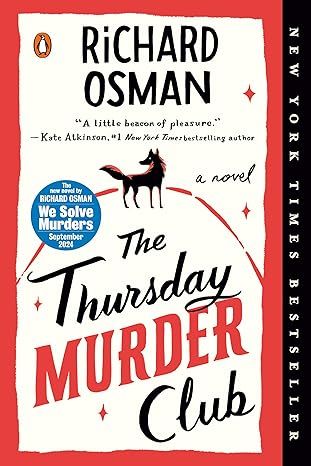
The Thursday Murder Club: A Novel (A Thursday Murder Club Mystery)
4.3
-
155,575
$6.33

Sapiens: A Brief History of Humankind
4.6
-
140,302
$13.49

The Butterfly Garden (The Collector, 1)
4.3
-
88,556
$9.59

Things We Hide from the Light (Knockemout Series, 2)
4.4
-
94,890
$11.66
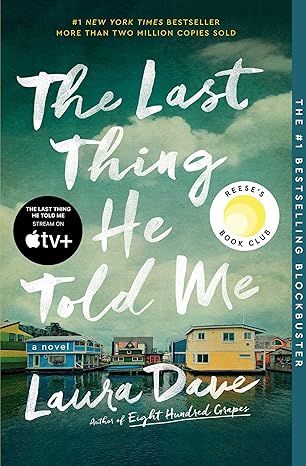
The Last Thing He Told Me: A Novel
4.3
-
154,085
$2.99
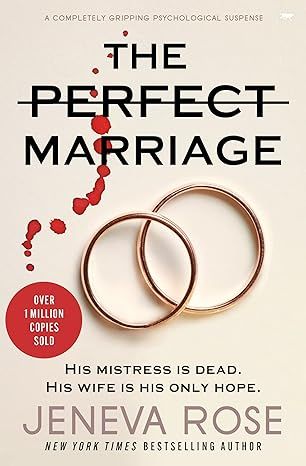
The Perfect Marriage: A Completely Gripping Psychological Suspense
4.3
-
143,196
$9.47

The Coworker
4.1
-
80,003
$13.48

First Lie Wins: A Novel (Random House Large Print)
4.3
-
54,062
$14.99
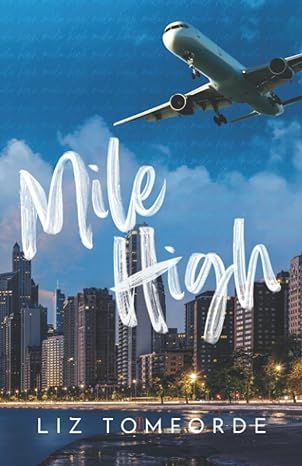
Mile High (Windy City Series Book 1)
4.4
-
59,745
$16.19

Layla
4.2
-
107,613
$8.99

The Locked Door
4.4
-
94,673
$8.53
